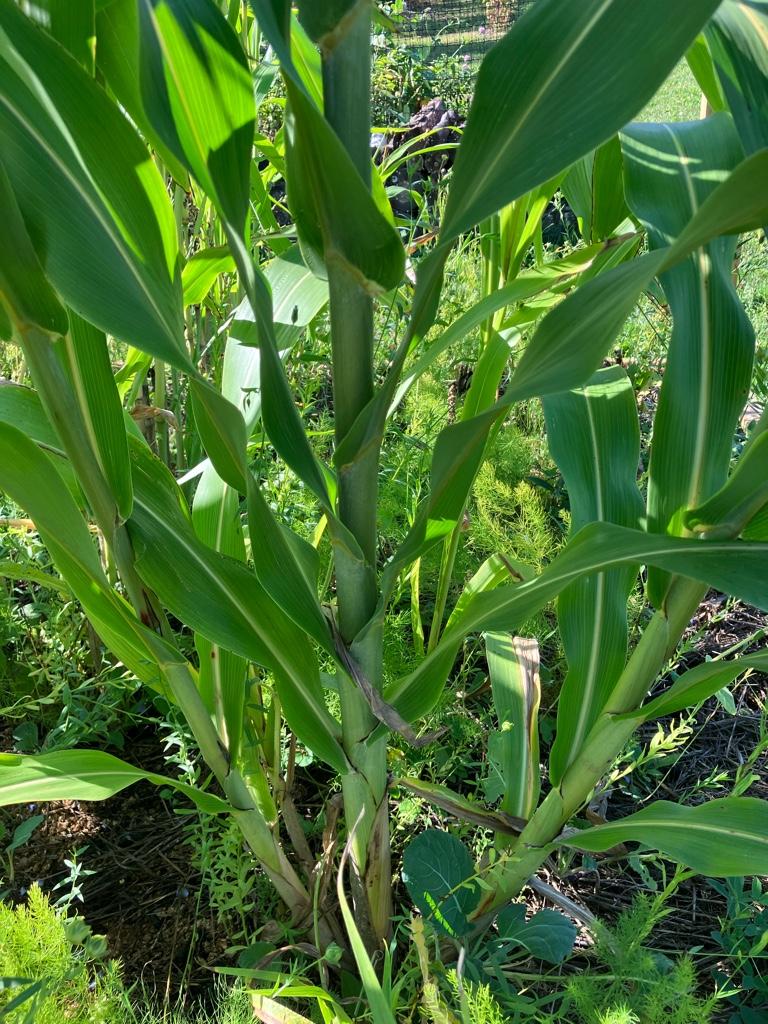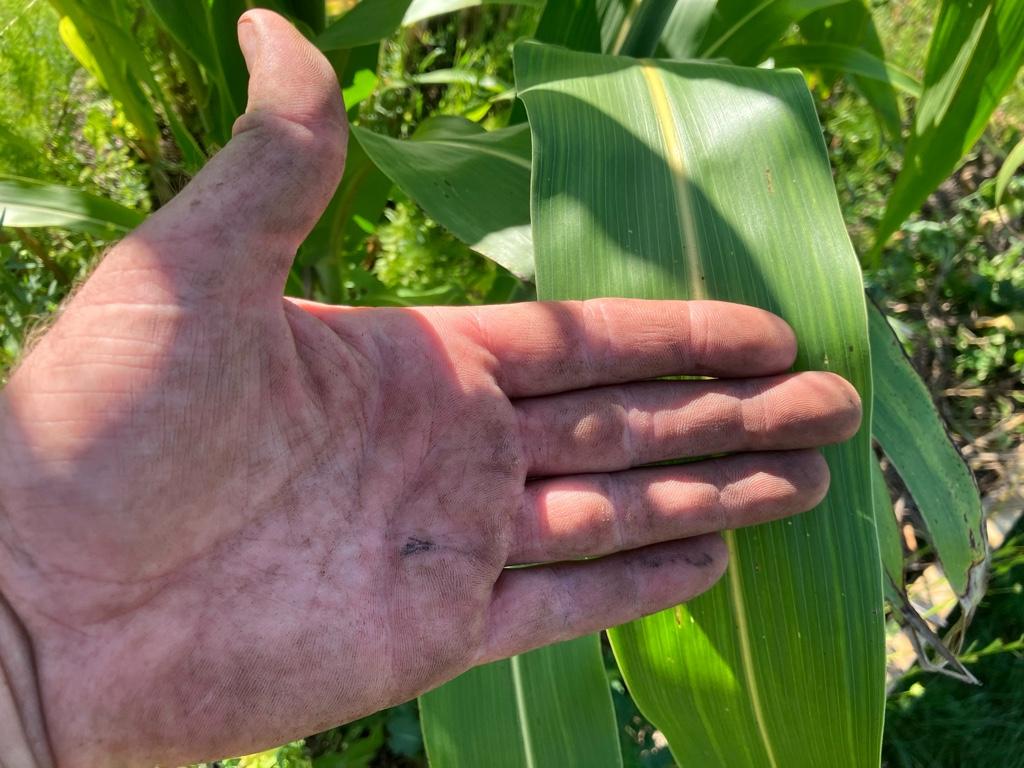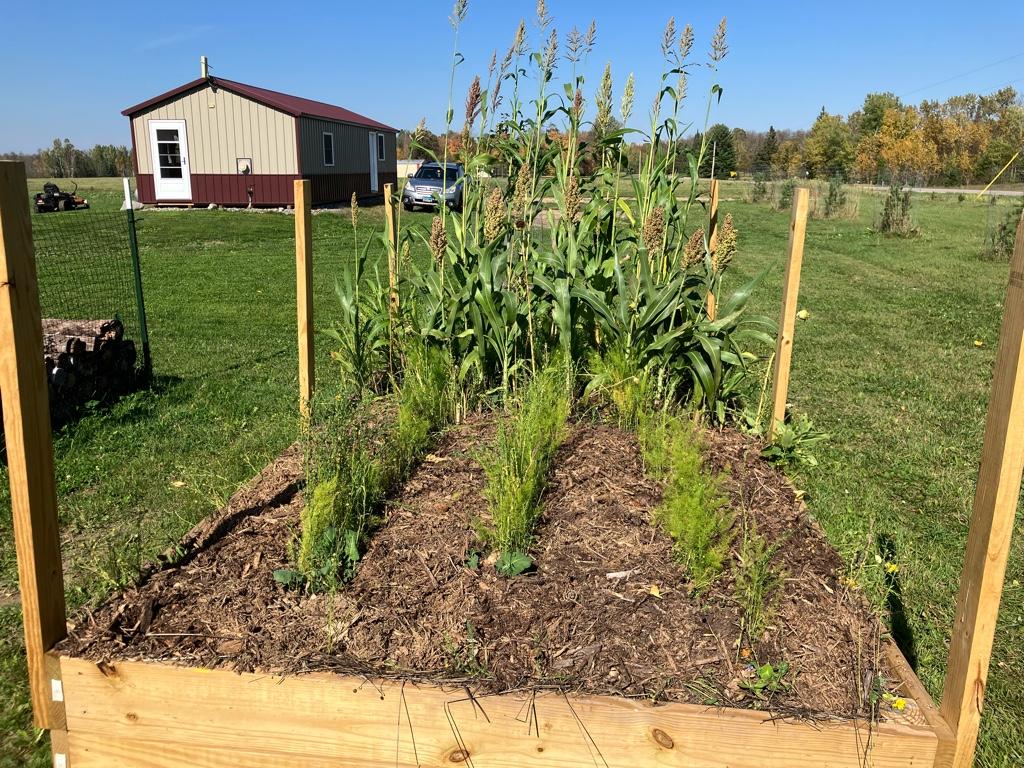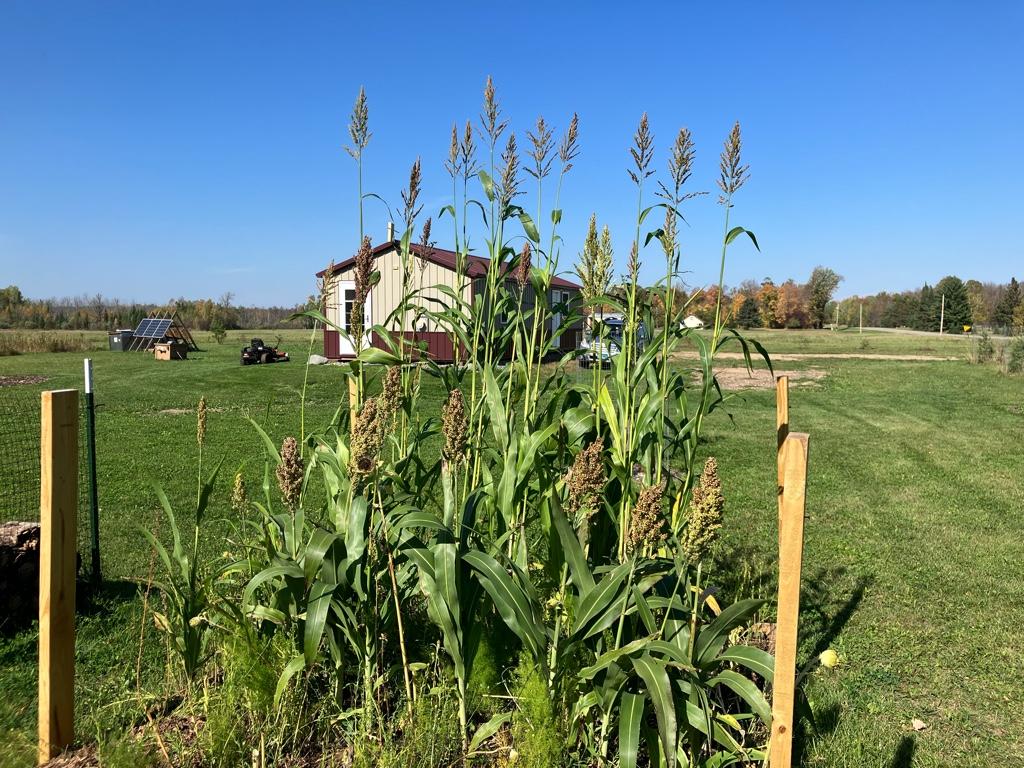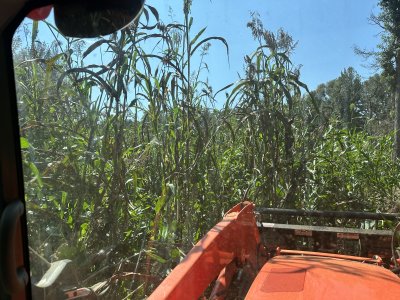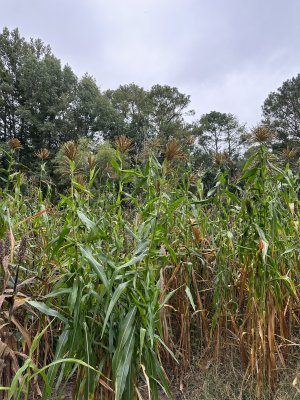I've been reading several descriptions of
Dwarf Sorghum Sudan BMR, with the Gene 6 traits. Also watched some video on this crop. Seems to be an ideal deer food plot and screen for my purposes. The whole plant can be consumed by deer and it's got allot of biomass. I looked at the seeds offered at Green Cover, Albert Lea, Milborn, Welters, and a few more. Seems the BMR trait is needed, and the series 6 is the deal. It will not get as high as some of the other SSG's out there....but it does have better standablity and less lodging, due to its wider stalk and less height. I'm not sure where I will buy seed....but the Welter's site has a great price and sounds good to me. Very affordable seeds everywhere. I'm posting below what seems like the best one page "cliff notes version" on this crop.
BMR Gene 6 Sorghum-Sudan
Description
Sorghum-sudangrass crosses are a warm-season, or C4, grass. Because warm-season grasses process sunlight into sugars (photosynthesis) differently than do cool-season (C3) grasses, sorghum-sudangrass:
• Must be planted after soil temperatures reach 60°F and are rising
• Grow very little at temperatures lower than 60°F
• Grow best at 77°F and higher
• Will produce a ton of silage with half the rain or irrigation needed by corn silage
After germination, sorghum-sudangrasses thrive in hot, dry weather. They die soon after a freeze. These forages produce quick tons of highly digestible (high-energy) silage or pasture; they are an excellent source of pasture for the hottest months. BMR (brown mid-rib) is a natural trait (not GMO) that produces lower levels of lignin in these plants. BMR Gene 6 is the highest BMR level, meaning that it contains the lowest level of lignin of any sorghum or sudan. This trait transforms sorghum products from heifer feed to the highest-quality dairy cow feed. All Alta and KingFisher sorghum-sudangrasses are BMR Gene 6 and are available as conventional treated (CT) and untreated (UT).
AS6402 is a brachytic dwarf, a natural (not GMO) trait that provides these plants with at least four advantages:
• Shorter residual cutting height
• Shorter space between leaves (intermodal distance)
• Shorter stalk but with more leaves, a quality improvement
• Higher tillering capacity
Management
Sorghum-sudangrass will be harvested for baleage or haylage about 45 days after planting. Grazing is usually initiated a week to 10 days earlier. KF SugarPro 55SS is mowed when it reaches a height of 38 to 40 inches.
Residue heights are also important. AS6402, a brachytic dwarf, can be mowed with a 4-inch residue, which is one reason for its popularity. Non-brachytic versions must be mowed with at least 6 inches of residue (above the second growth node) to promote rapid regrowth. Caution: Regrowth can be almost zero if the residual is too short.
Fertilizer needs are 1 to 1¼ units of nitrogen per growing day, i.e., 45 to 50 units for the first cut and 30 to 35 units for eachsubsequent cut. Potassium, phosphorous and sulfur are also needed on most farms. All fertilizer needs are the equivalent of the needs for 100-bushel corn.
Manure can be used for the original application of fertilizer; however, commercial nitrogen is the best source after a cutting. Nitrogen needs for grazed sorghum-sudangrass must be reduced proportionally so that cows can be brought in to graze earlier without danger of nitrate poisoning. Sorghum-sudangrass should not be grazed for 7-10 days after a killing frost as it takes about seven days for the prussic acid produced by the frost to dissipate.
Establishment
Sorghum-sudangrass usually emerges in about 10 days and then can grow 3 to 6 inches per day. A conventional or no-till drill isused for the seeding, and planting depth should be 1 to 1½ inches. Planting after a small grain crop (rye or triticale, for example) requires dealing with the allelopathic effects from the dying grain plants. This can be accomplished with either minimum tillage or heavy application of liquid manure.
Because no herbicides are available for sorghum-sudangrass, weed-management activities must precede planting.
Rating scale: Poor I Fair I Good I Very Good I Excellent
AS 6504
Byron's A542B
KF SugarPro 55SS
AS6402
Byron 577 DS



